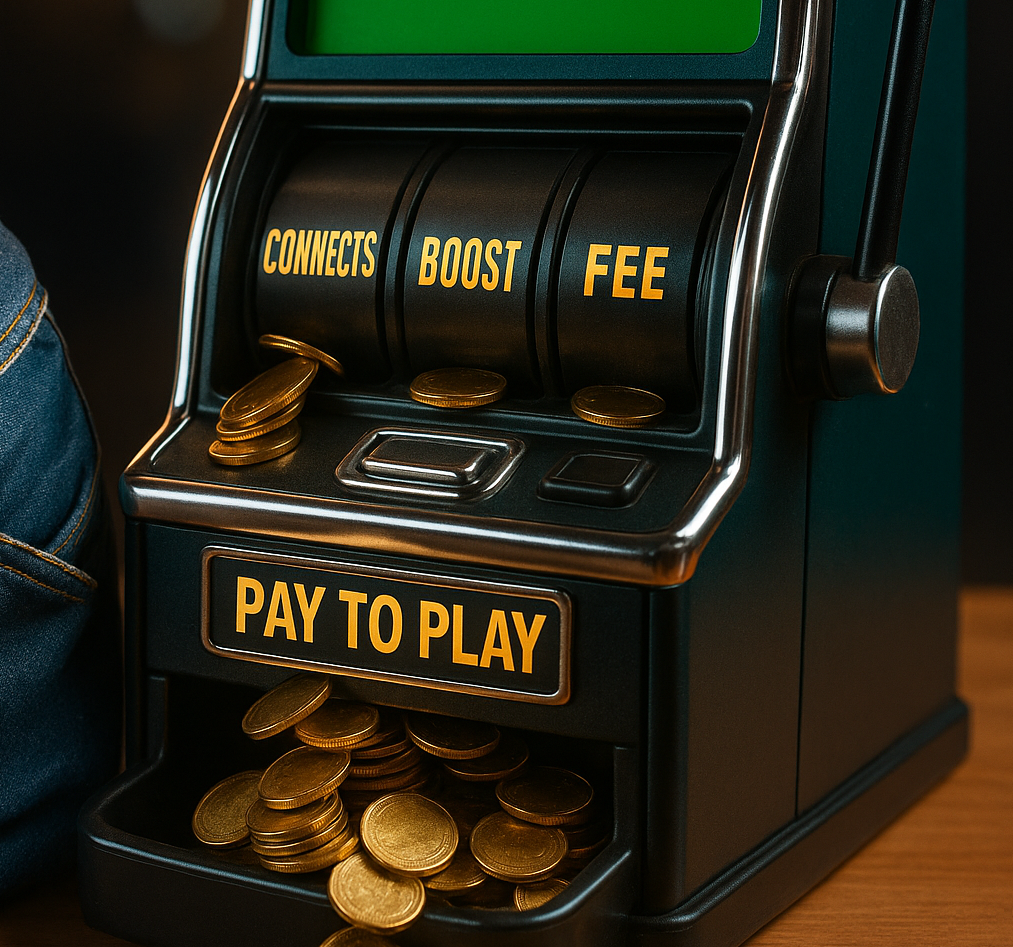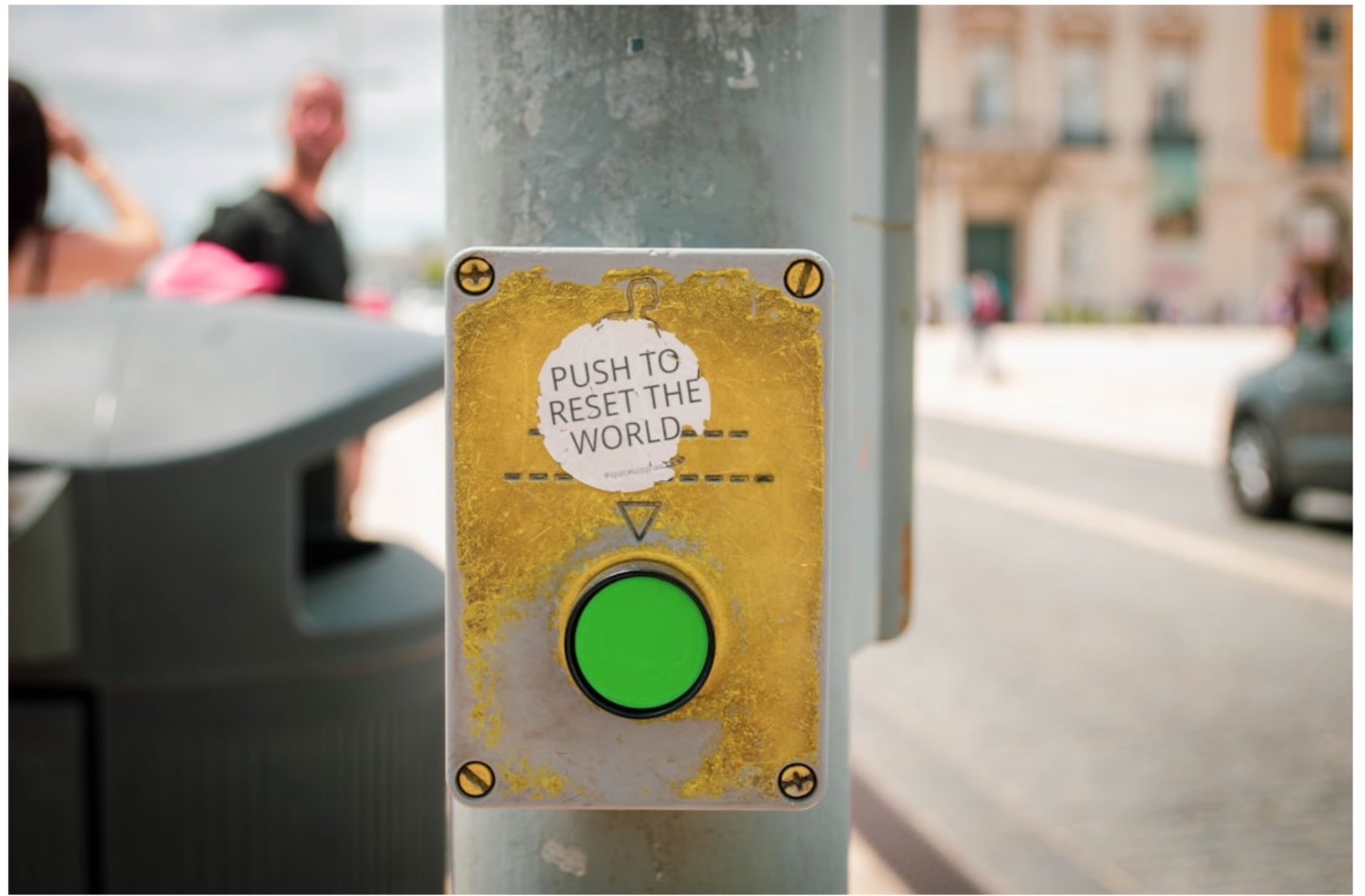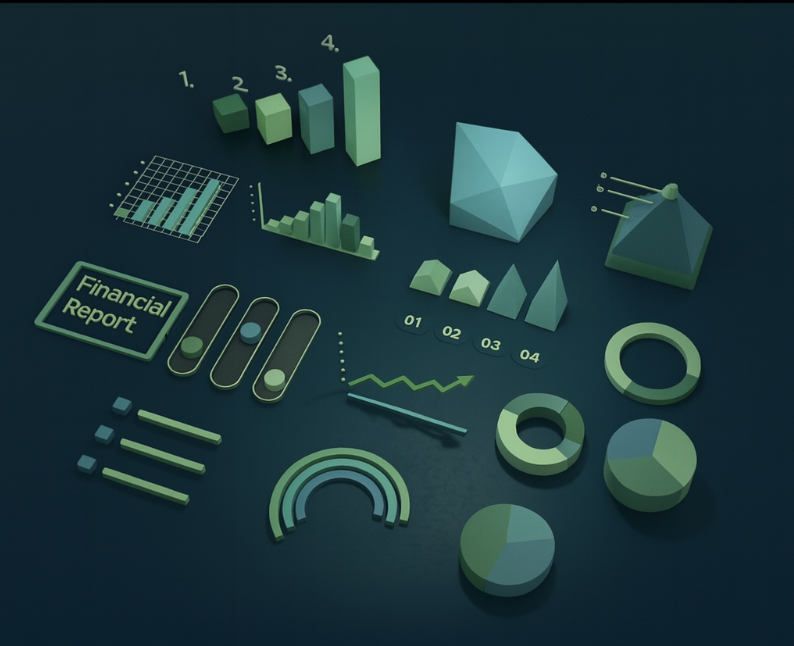Upwork:
From Simple Fees
to Pay-to-Play
In recent years, Upwork has consistently reshaped the financial rules of freelancing on its platform. Officially, these changes are framed as “balancing the marketplace,” but in practice the goal is clear — maximize profit without scaring away users with sudden moves. Step by step, Upwork has monetized more and more freelancer actions: from proposals to basic profile visibility.
Evolution of Upwork’s Payment System: A Retrospective
Upwork wasn’t always pay-to-play. In the beginning, the rules were simple: you complete a job → the platform takes a percentage. Over time, however, more costs have been shifted upfront onto freelancers.
- 2010–2016: Flat 10% fee. In the early days (from the Elance/oDesk era into the first years after the merger), freelancers simply paid a 10% commission on every contract, regardless of size or duration. Straightforward and predictable.
- 2016–2018: Tiered 20/10/5 model. Upwork introduced a sliding scale: 20% on the first $500 billed to a client, 10% from $500 to $10,000, and 5% beyond $10,000. This incentivized long-term relationships but punished newcomers, who had to give up 20% on small projects.
- 2019: Free proposals disappear. Upwork eliminated free proposals and introduced paid Connects. Submitting a proposal now required 1–6 Connects ($0.15 each). Officially, this was to cut down on spam. In practice, it was the first real paywall: even to try, you had to pay.
- 2020–2021: “Carrots” for motivation. The platform added bonus Connects for badges like Rising Talent and Top Rated, and refunded Connects if a client closed a job without hiring.
- 2022: Paid auction for proposals. Upwork rolled out Boosted Proposals, allowing freelancers to spend extra Connects to push their proposal to the top of a client’s list. This created an auction system: whoever paid more got seen first. On popular jobs, bids reached dozens of dollars just to “boost” visibility.
- 2023: Paid profile promotion. Next came Boost My Profile. Instead of paying only for proposals, freelancers could now spend Connects to promote their entire profile in search results and client recommendations. Visibility itself became monetized.
- “Fair” commission. Upwork scrapped the 20/10/5 tier and introduced a flat 10% fee on all new contracts. Newcomers benefited — a $500 contract now netted $450 instead of $400.
- 2023–2024: Rising cost of proposals. The cost to submit proposals climbed. What once required 2–6 Connects began reaching 12–16 by 2024. The rules were opaque: fees varied based on job length, category, and popularity.
- 2024: A “starter package” for newcomers. A completely free start vanished. New accounts got just ~10 free Connects per month. To actually compete, you had to purchase extras or subscribe to Plus. By the end of 2024, proposals cost anywhere from 10 to 24 Connects.
- 2025: Maximum costs, minimal transparency. In May 2025, Upwork introduced a variable commission of 0–15%. The platform sets the rate for each category at the start of the month. The percentage is shown in the job post and locked in for the contract.
From 2016 to 2025, Upwork transformed from a simple “pay after you earn” model into paying at every step: to submit a proposal, to boost it, to promote your profile — and still hand over a cut of your income.
“Pay-to-Play” on Upwork: What It Includes Today
Everything costs money now:
- Submitting a proposal. Costs 10–24 Connects per attempt.
- Freelancer Plus subscription. $15/month for 80–100 Connects, bid insights, and uninterrupted profile visibility.
- Available Now Badge. A visibility signal that consumes Connects weekly. It prioritizes your profile in searches and shows clients you’re open for work.
- Boosted Proposals. Auction system: pay more Connects to rank higher in the client’s proposal list.
- Boost My Profile. Paid placement in search results and client recommendations.
- Service fee. 10–15% cut from every contract.
Are the First Steps Unprofitable for Newcomers?
Yes. In the past, you could start without paying. Now even getting off the ground requires Connect purchases.
- Financial barrier. $5–10 for Connects may be trivial for some, but in low-income regions it’s significant.
- Risk of wasted money. Newcomers often burn Connects on irrelevant jobs and quickly become discouraged.
- Spam persists. Paid proposals didn’t eliminate mass submissions — they just made them more expensive. Experienced freelancers can budget for hundreds of Connects; newcomers cannot.
As a result, beginners feel the squeeze the most: they’re competing not only on skills but also on budget.
Conclusions
On paper, Upwork’s commission structure (10–15%) looks competitive. Platforms like Fiverr and Freelancer.com often charge even more.
But focusing on commissions alone misses the bigger picture. Today, visibility algorithms decide who appears on the first search pages, whose profiles clients see, and whose proposals rank higher. These algorithms are unstable. Over the past two years, Upwork has been experimenting — often pushing newcomers forward while established freelancers with strong histories vanish from the top results.
The same applies to the variable 0–15% commission: no one has reported seeing fees below 10%, but 15% already shows up. The decision-making process is opaque.
Freelancers are caught in a double bind: on one hand, you must pay to compete; on the other, even paying doesn’t guarantee visibility because of shifting algorithms. For newcomers this may feel less dramatic — they don’t yet grasp how ranking works — but for veterans who’ve invested years and thousands of dollars, the instability is a serious risk.
In short: Upwork today isn’t just pay-to-play. It’s pay-to-play under algorithms that can change at any moment.The only realistic approach is to treat it as a high-risk business: calculate not only Connects and fees but also factor in algorithmic unpredictability.
More Articles

AI Workslop: Why Businesses Pay Freelancers to Fix AI
07-10-2025
AI speeds up work but often creates “workslop” - results that look complete yet lack value. Freelancers are the ones turning them into quality.

Disney Creative Strategy: How Ideas Become Reality
03-10-2025
Disney Creative Strategy: dream, plan, critique — a tool to guide ideas from imagination to real-world results.

Upwork Boost: Increasing Freelancer Profile Visibility
29-09-2025
Discover how Upwork’s Available Now badge and Profile Boost work, their costs, pros and cons, and which boost is best for freelancers or agencies.

10 Posts to Help You Get Started on Upwork
29-09-2025
We’ve gathered a set of articles to guide you through the essentials — from setting up your profile to building long-term client relationships.

Etcetera summer 2025 report
26-09-2025
Etcetera summer 2025 results: quiet season, new team members, shifting Upwork rules, and plans for an active autumn.

Upwork Feedback: a trust tool you should learn to read and write
22-09-2025
Upwork feedback is more than stars — it builds trust, shapes reputation, and guides choices. Learn how to read, request, and write reviews effectively

7 Hats: a thinking tool that saves time and nerves
08-09-2025
Instead of mixing emotions, facts, and criticism in chaos — this method by Edward de Bono helps separate thinking modes.

Upwork: From Simple Fees to Pay-to-Play
29-08-2025
Discover how Upwork’s fees evolved from flat 10% to a pay-to-play model with Connects, boosts, and variable 0-15% commissions in 2025.

Upwork Reset 2025: How to Refresh Your Freelance Strategy
25-08-2025
Discover 5 practical steps to reset your Upwork strategy in 2025: update skills, rethink pricing, optimize proposals, and grow with the market.

How to Build a Team That Won’t Fall Apart in a Crisis
22-08-2025
How to build a strong team that survives crises: Denys Safonov shares lessons from 11 years of leading the agency Etcetera through global challenges.

Upwork Q2 2025: What Changed and What It Means for Freelancers
15-08-2025
Upwork Q2 2025 results: fewer clients, bigger budgets, AI at the core, rising paid services, and strategic acquisitions shaping the platform’s future.

Creativity Blocked? Try These Research-Backed Ideas
03-08-2025
Lost your creative spark? This guide offers 8 gentle, practical ways to reconnect with your creativity—especially when you’re tired or burned out.
